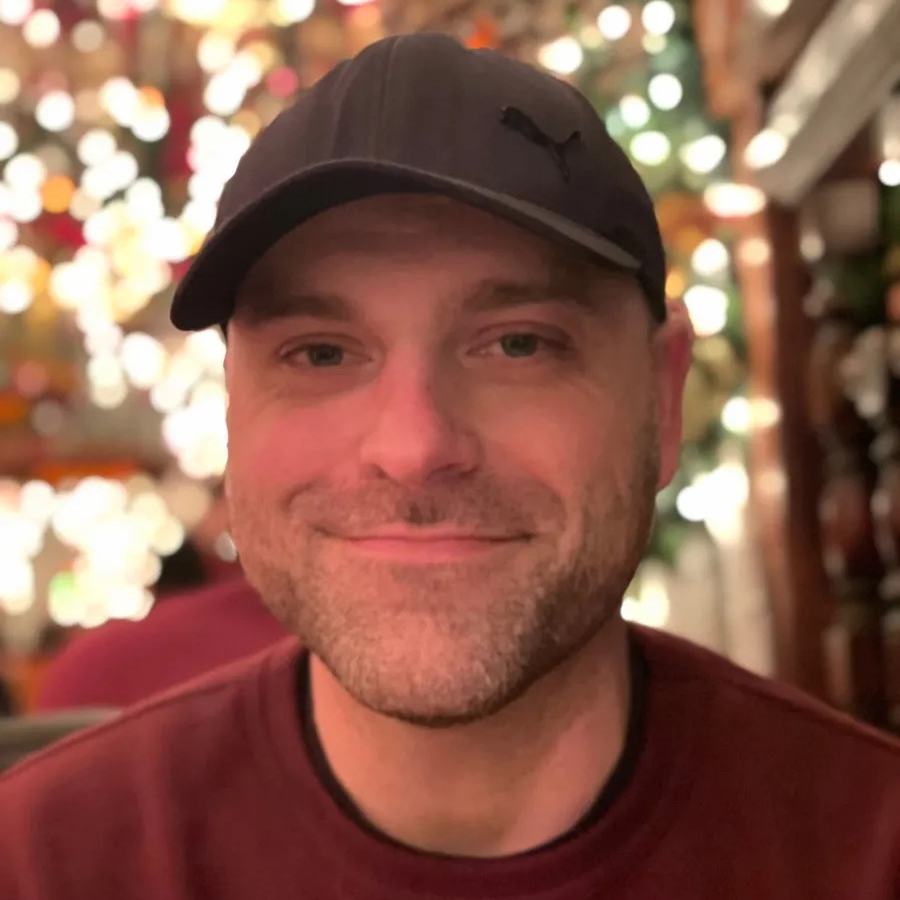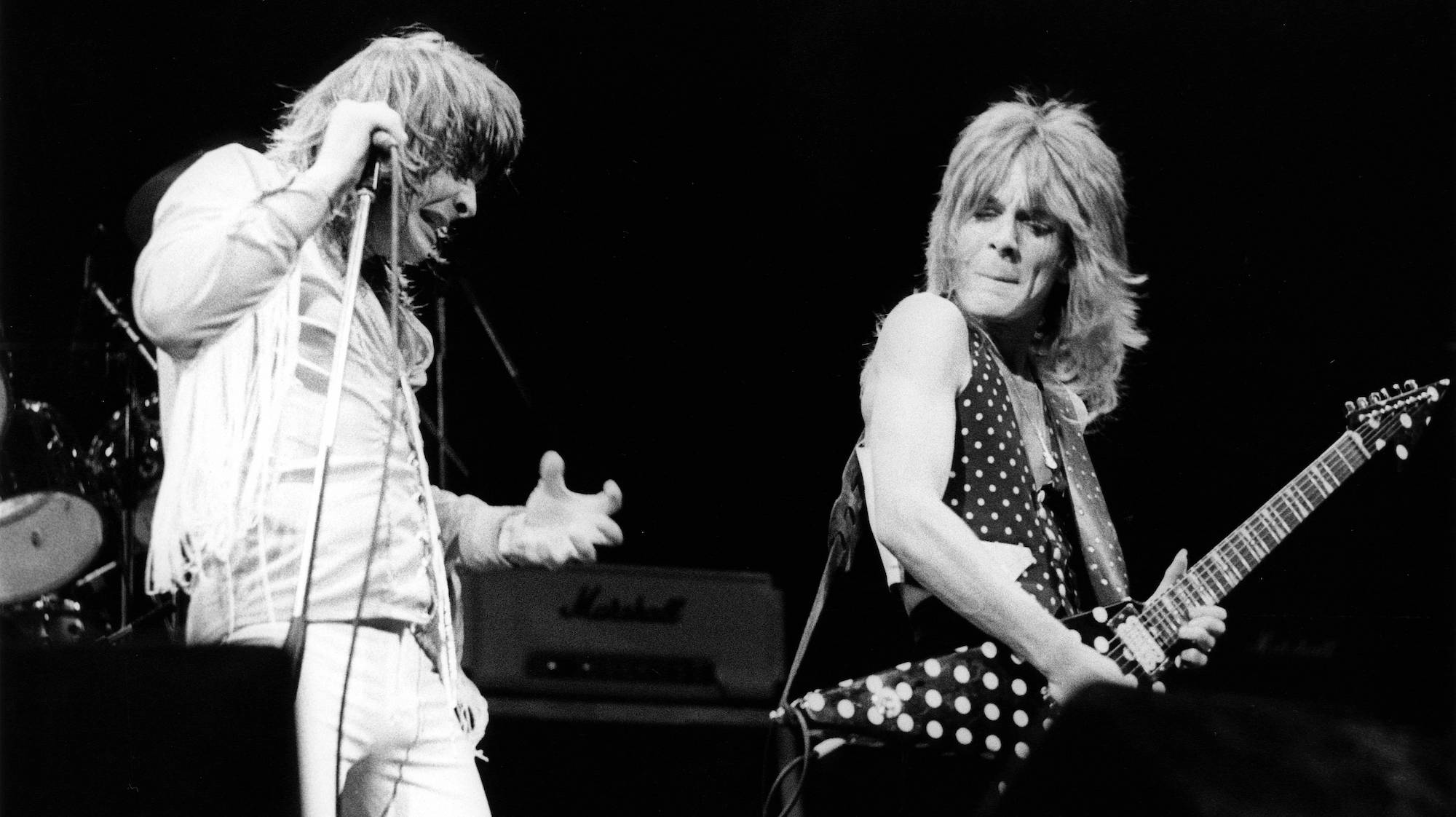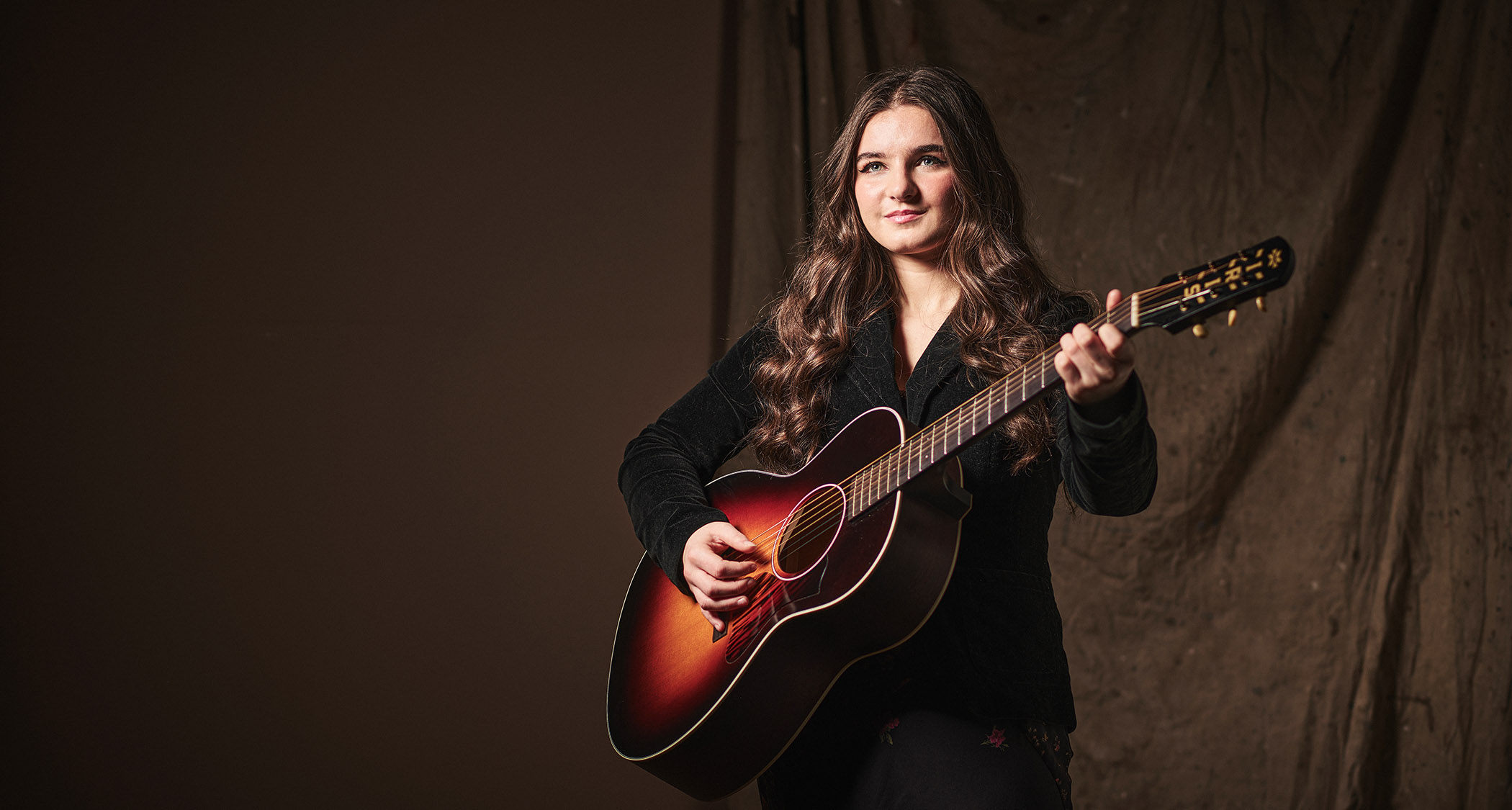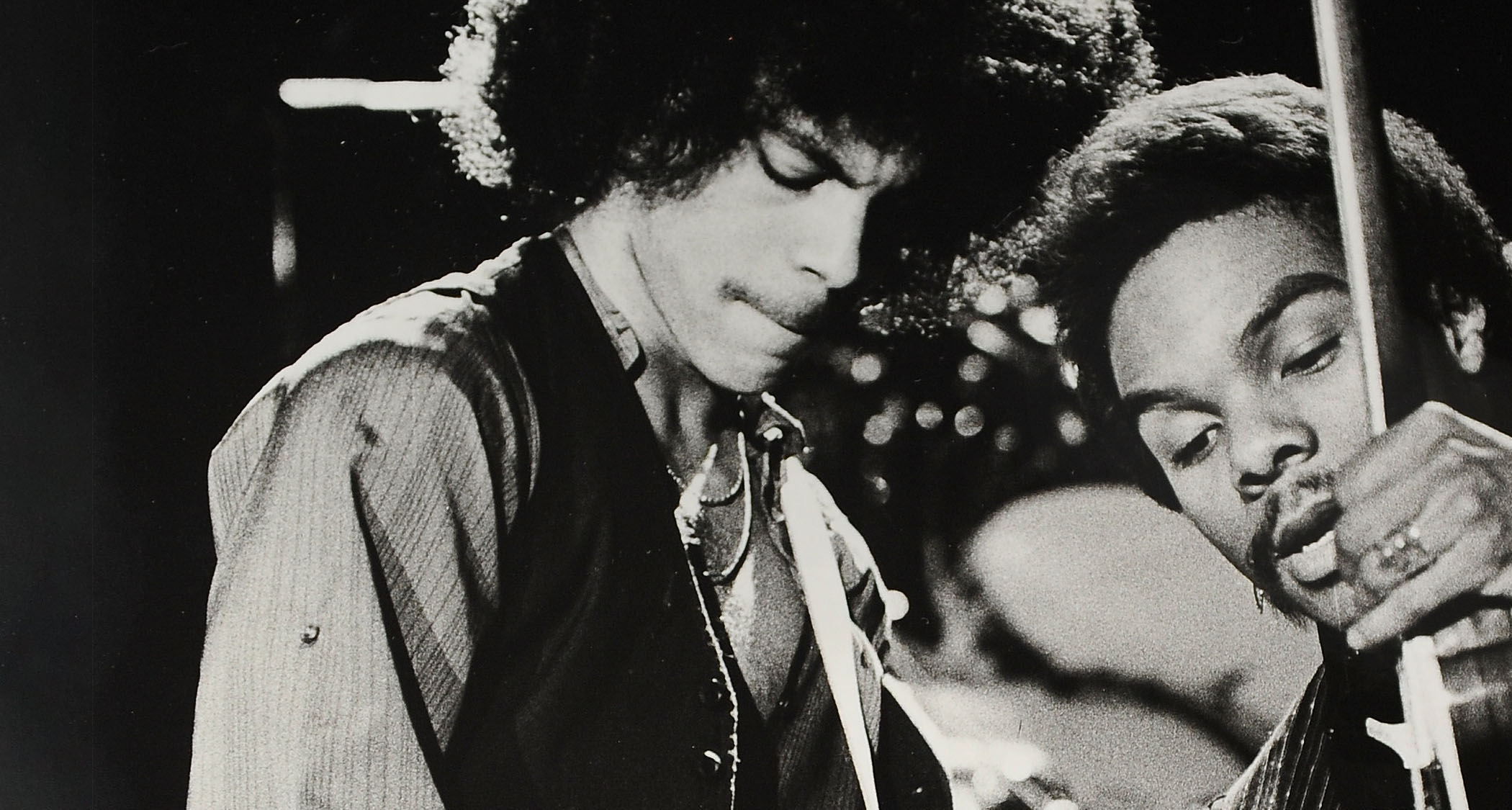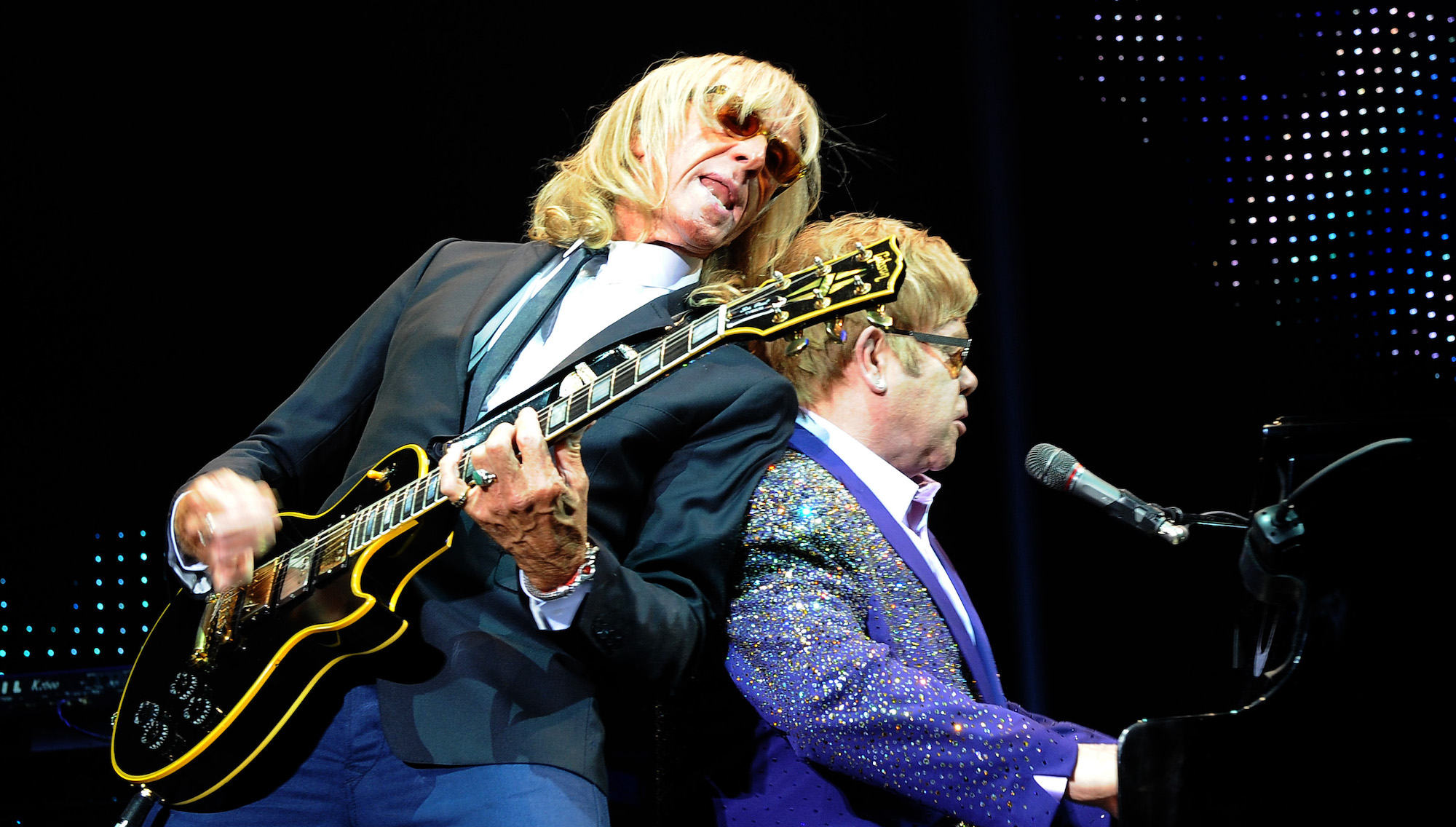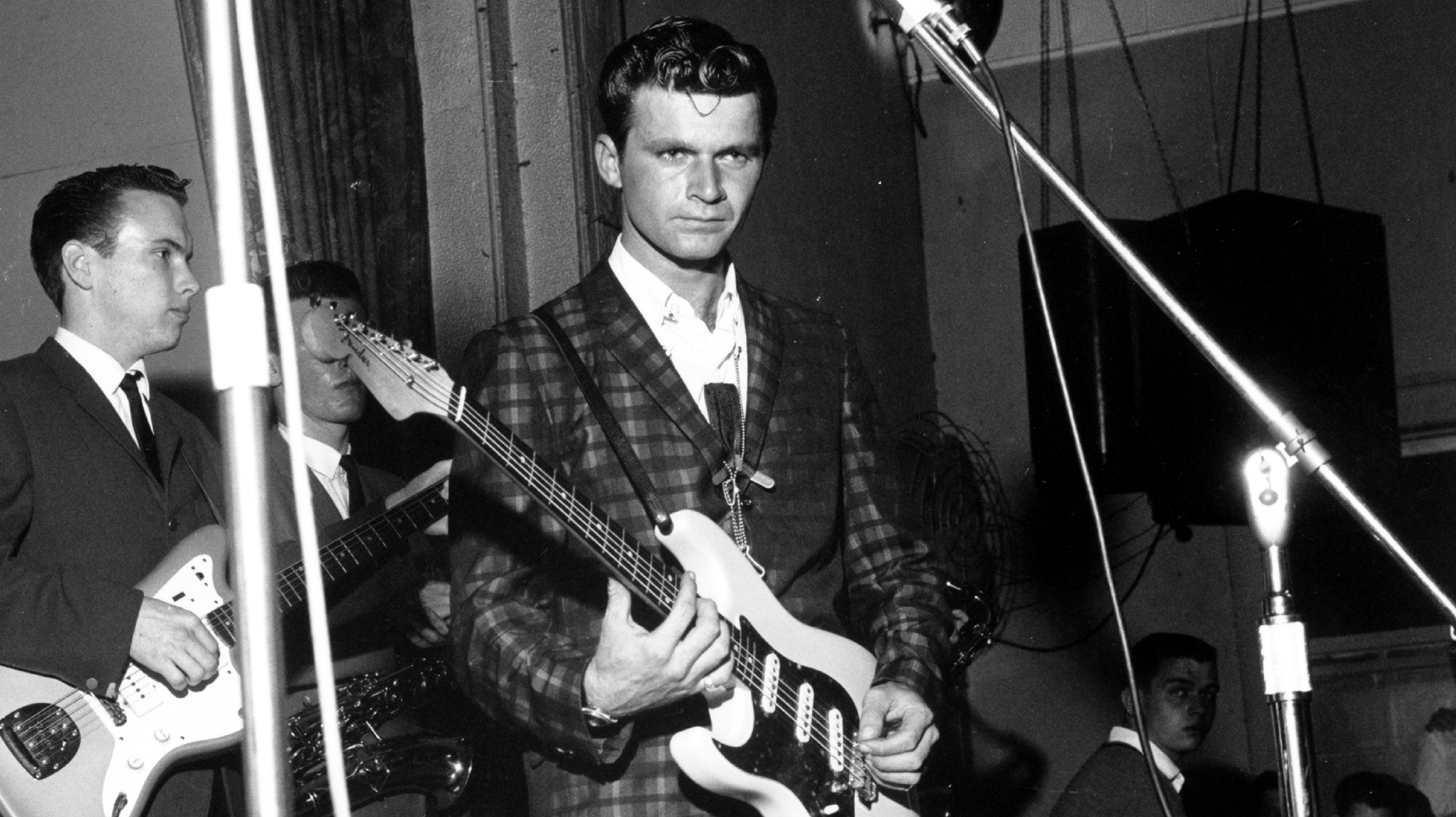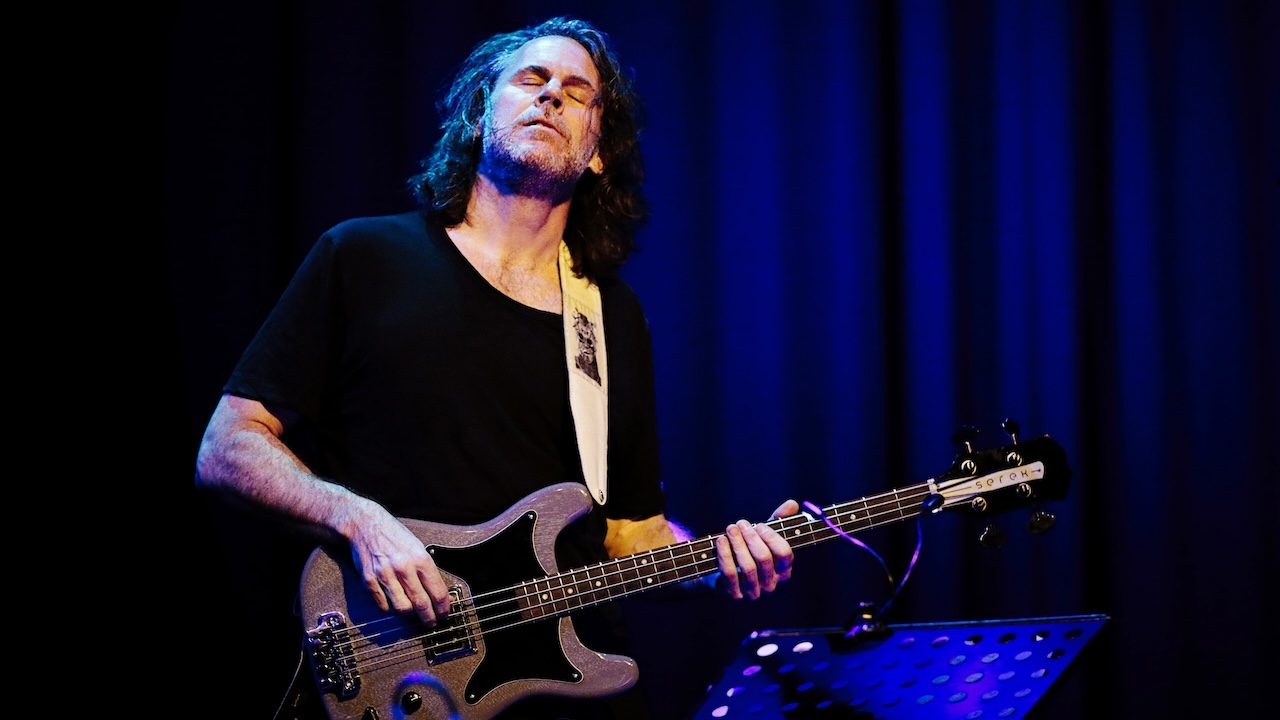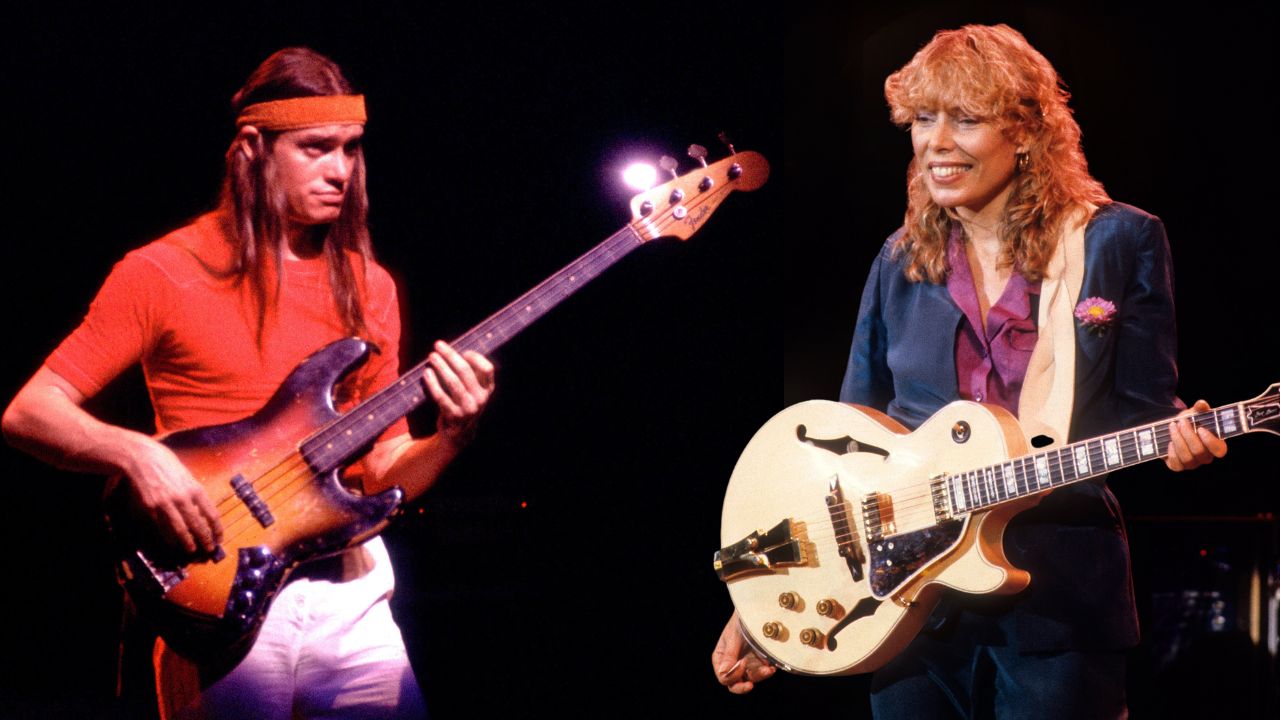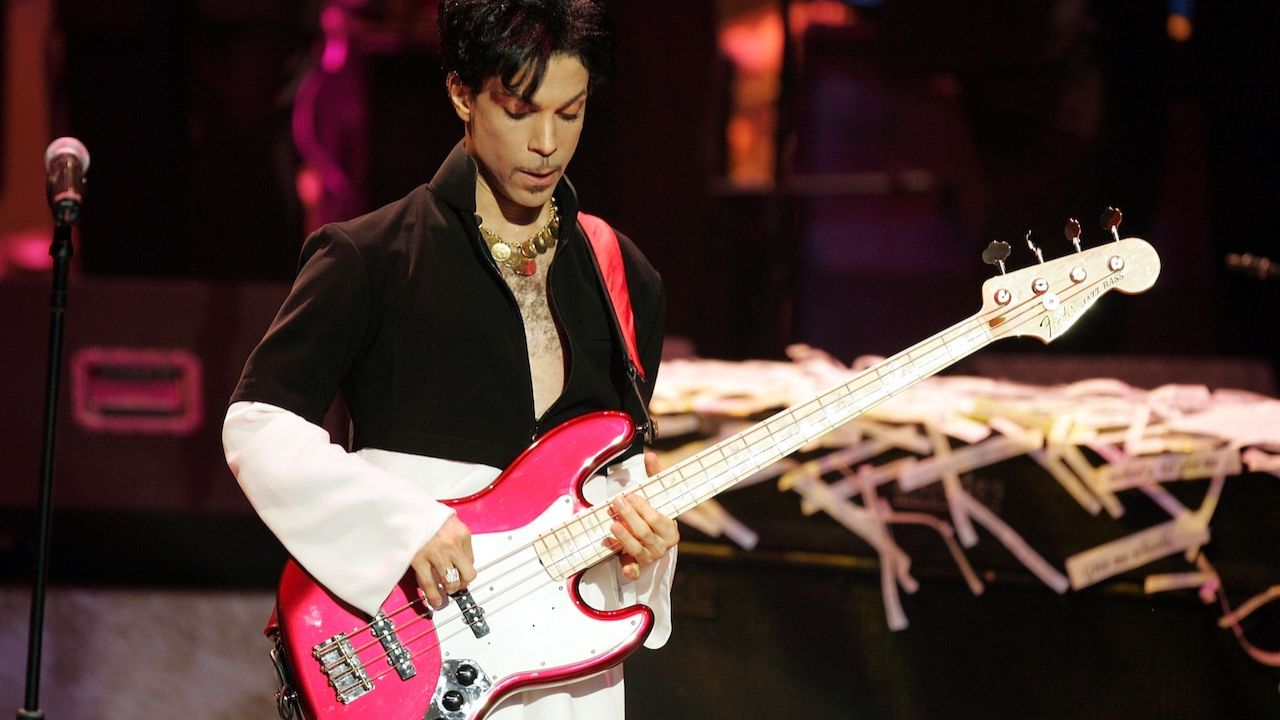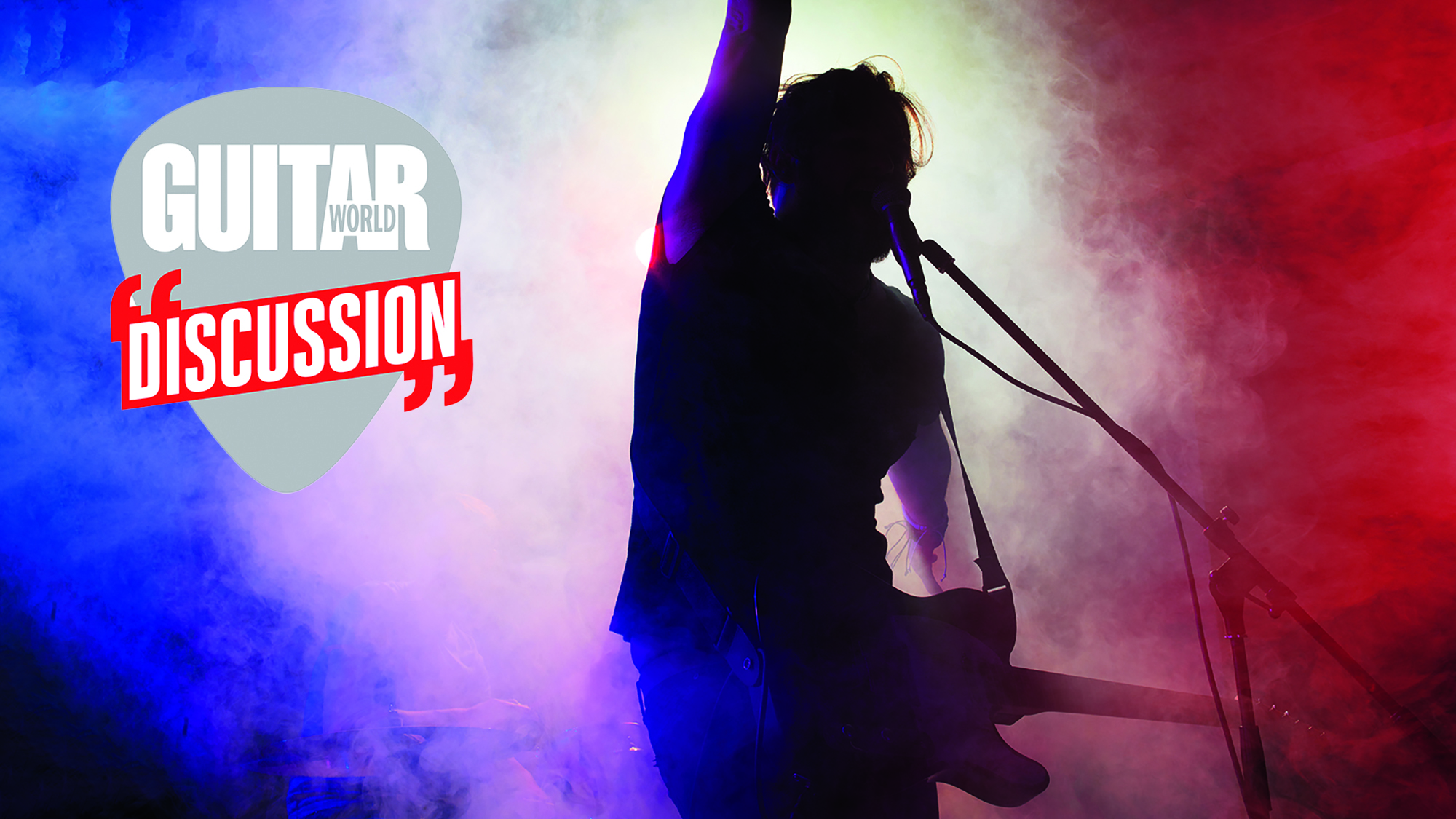“Zal is really nobody’s guitar hero. Fans say he’s the most underrated player ever; many guitarists rate him amongst the best... but I’ve never heard anyone call him their ‘guitar hero’”: Billy Rankin on lessons learned from the legendary Zal Cleminson
In and out of Nazareth twice, and always loyal to his Gibson ES-335, Rankin had a lifetime's worth of rock stories by his mid-20s
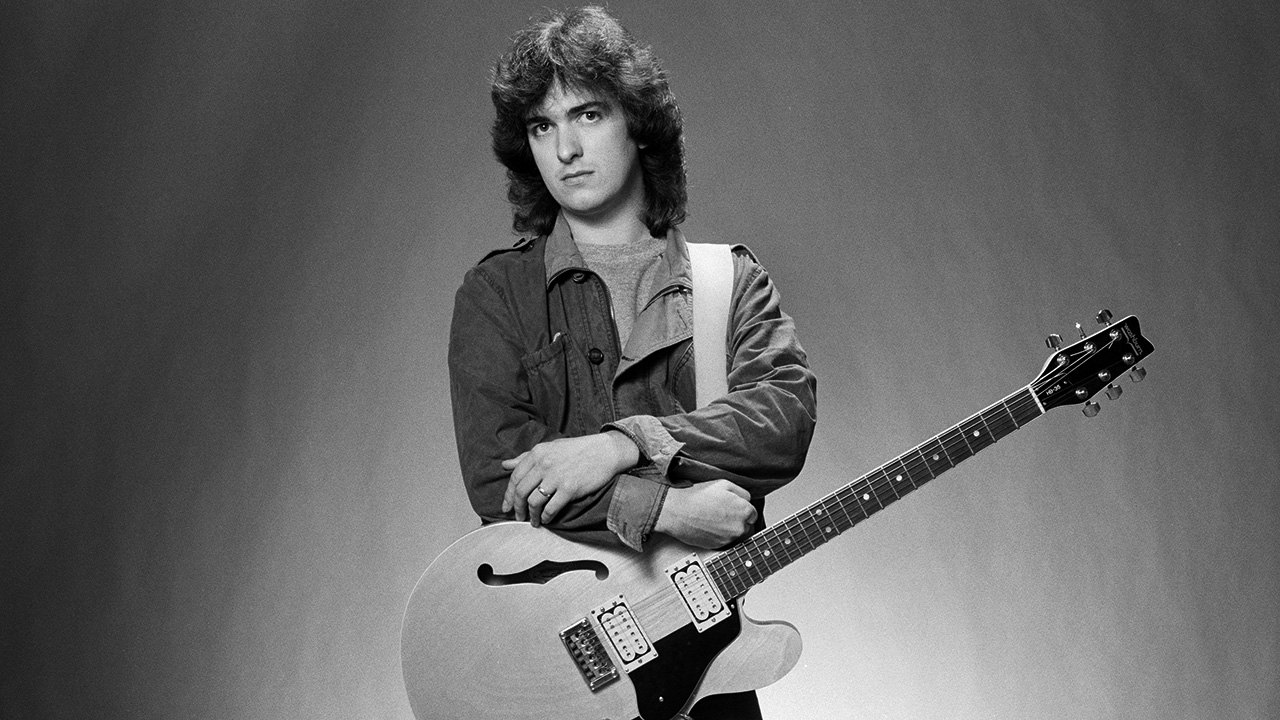
As a young phenom, Scottish guitarist Billy Rankin found himself playing alongside Zal Cleminson in the Sensational Alex Harvey Band offshoot group the Zal Band. Cleminson went on to join Nazareth, but when he left in 1980, the fellow Scots called Rankin up.
Lined up with Manny Charlton, the ES-335-loving Rankin played on three Nazareth albums – Snaz (1981), 2XS (1982), and Sound Elixir (1983) – the latter two loaded with a ton of his hard-rocking output. In 1983 he released his solo record, Growin’ Up Too Fast.
“It was like being a teenage idol for a few months,” he tells Guitar World. “I even did a couple of US tours. A second album, Crankin’, was recorded in 1984, and it looked like my days with Nazareth were over.”
But not forever. He re-joined the band in 1990, this time in place of Charlton, and stuck around for two more albums, 1991’s No Jive and 1994’s Move Me. Several ensemble tours followed, leading to what Rankin says was Nazareth’s “one and only mention in Rolling Stone magazine.”
He explains: “It was with Blue Oyster Cult, Uriah Heep, and Wishbone Ash, and named The Total Recall Tour. ‘Total Recall?’ Rolling Stone wrote, adding, ‘Should be called Total Retread – because none of these bands were any good first time around!’”
Leavin' Naz for good in ’94, Rankin dropped out of the music business altogether – but not before participating in the Mick Ronson tribute concert at Hammersmith Odeon in April of that year. “I have no real regrets,” he says.
“I sometimes look back, as we’re doing now, and remember all the great times I enjoyed playing the music I love. But sometimes I think, ‘It’s time to hang up the leather pants,’ which is what I did.”
Get The Pick Newsletter
All the latest guitar news, interviews, lessons, reviews, deals and more, direct to your inbox!
How did you meet Zal Cleminson?
“Zal and I shared a friend, Eddie Tobin, the Sensational Alex Harvey Band’s tour manager, who also worked for Mountain Records in London. As a 15-year-old guitarist, Eddie was my agent with Glasgow’s Music & Cabaret Agency, who booked my first band, Phase, for gigs around central Scotland.
“I remember setting up our gear at the Dial Inn, Glasgow, for our Saturday night gig. An old blues trio was entertaining the afternoon crowd with some Stormy Monday vibes. I used an H/H 100-watt combo amp with the infamous dual concentric speakers, and a Big Red Nose-looking pedal switch to turn the amp’s distortion on and off.
“Then I heard the most wondrous guitar tone I’d ever experienced from this old guy’s rig – a single Marshall 50-watt head and a 4x12 cabinet. I couldn’t believe how glorious it sounded. We chatted during their break, and it turns out he was tired of lugging his rig around and had heard wonderful things about my H/H setup.
It’s a massive bugbear… when you’re a struggling musician you get no help – have a hit or two and they throw shit at you
“Saying, ‘Aye, Marc Bolan uses one’ probably wasn’t my best sales pitch, but we agreed there and then to simply swap equipment, and my perfect sound was born. From then on, my rig never changed. Sometimes it got bigger, and if the venue were small, I’d use an attenuator to keep the amp driving hard.
“Not long after this, Alex Harvey quit SAHB, and Zal announced his intention to continue with the band, but with an additional guitar player and a new singer. Eddie met me at one of our local gigs and said, ‘Pack yer bags; I’m taking you to London!’ So, at the start of 1978, at 17, I met one of my childhood heroes and joined one of my favorite bands.”
What’s the biggest lesson you learned from Zal?
“The term ‘guitar hero’ is used a lot in rock circles. The interesting thing about Zal is that he’s really nobody’s guitar hero. Lots of fans say he’s the most underrated player ever, and many guitarists rate him amongst the best – but I don’t think I’ve ever heard anyone call him their ‘guitar hero.’
“He plays with a passion and technique that can’t be learned. I’ve known Alistair Cleminson for nearly 50 years now. Despite having played together frequently over this time, I can honestly say I’m no closer to learning his style than when, back in 1978, during rehearsals, I asked him, ‘What the fuck did you just play?’ and he replied, ‘What? I dunno!’”
Did you audition to join Nazareth?
“There was no audition. By now, Zal had recorded and toured two albums with Nazareth. I’d babysat for him in North London while carving out my own career, resulting in a few dead ends and a solo deal with CBS Records – which went nowhere.
“Then Eddie Tobin got back in touch. Zal had quit Naz, and they were on the lookout for a replacement. Eddie told bassist Pete Agnew I was the perfect fit. Pete called and started, ‘Played with SAHB at 17? What guitar do you play?’
“I said, ‘Gibson 335 – a real guitar.’ Pete said, ‘Okay, Bill. Unless you’re a complete arsehole, you’re in. We start rehearsals tomorrow; welcome aboard.’ That was it!”
What was your typical rig like by the time you joined Nazareth?
“I recently read an interview with Ace Frehley where he said something like, ‘As long as I had a Marshall 100-watt amp and a 4x12 cabinet, I knew I’d be good.’ I agree, but only up to a point.
Dad tried to talk the guy down from his asking price, but after watching me play it, he realized it was special to me
“My 50-watt Marshall amp and 4x12 were long gone, then me and Manny Charlton were invited for lunch by Jim Marshall himself at the company’s warehouse, and told: ‘Pick what you want.’
“It’s a massive bugbear to me, like string endorsements, but I get it. When you’re a struggling musician, you get no help – have a hit or two, and they throw shit at you. Anyway, I chose a shitload of 50-watt amps and eight 4x12’s. And Jim paid for lunch, too!
“Since I was 15, my staple guitar was a Gibson ES-335 bought for me by my dad from a bloke in a dodgy part of Glasgow. He initially tried to talk the guy down from his £300 asking price, but after watching me play it for a minute, my father realized it was something special to me.
“And it was – despite being butchered by guitar guru John Birch and resprayed white from its original Sunburst, it just connected with me. My dad had me pay it off through gigs and a newspaper round.”
How would you describe your style and general approach to that point?
“It hasn’t changed since my teens: play simple, play loud, and play to the song, not your ego. Nazareth had been a four-piece until Zal’s arrival in 1979, so when he left, they’d already gotten used to an extra guitarist.
“It suited me perfectly, but what nobody was ready for was a keyboard player. Ex-Spirit member John Locke had met the band during the recording of Fool Circle at Air Montserrat and played on a few tracks, so he was invited to join at the same time as me.”
What was it like recording Snaz, 2XS, and Sound Elixir?
“My tone never changed from Marshalls, and I don’t have proudest guitar moments. By 1980, Nazareth’s sound had changed considerably since the hard-rocking albums of the ’70s, but the band remained a major act on the live circuit, particularly in the US and Canada. So we hadn’t gotten soft, so to speak.”
How did Manny Charlton feel about that?
“Manny was especially keen on changing our sound – but I was much more focused on trying to keep things rocky; hence, my five-song contribution on 2XS and six songs on Sound Elixir are the most live-sounding tracks on the albums.
The chance to play on the same bill as Alvin Lee and Ricky Medlocke was too much to turn down
“Sharing the solos was democratically agreed on, with no real arguments. I remember one incident in the studio where I said, ‘’This needs a blisteringly heavy guitar solo,’ and Manny replied, ‘No – that’s just what they’d expect!’ That kinda sums up the differences, really.”
Why did you leave Nazareth in the 80s?
“The fact that I’d written a substantial amount of the songs on 2XS and Sound Elixir didn’t go unnoticed by our record label A&M, so they offered me a solo deal in 1983. The result was the Growin’ Up Too Fast album and a single, Baby Come Back, which did pretty well in the States.”
What led to your rejoining Nazareth in 1990 in place of Manny?
“The second time was in many ways easier, ‘cause it was just me on guitar. The decision to rejoin was made simpler by the fact that a tour was booked alongside Ten Years After and Blackfoot.
“The chance to play on the same bill as Alvin Lee and Ricky Medlocke was too much of a temptation to turn down. I had a great four years being the sole guitarist; I think we got much closer to the original essence of the band.”
How did you become involved in the Mick Ronson memorial concert?
“After his tragic death in 1993, his sister Maggi began putting together a tribute concert at the Hammersmith Odeon. I was flattered, to say the least, when I was offered the opportunity to be Mick Ronson for the night. We got Joe Elliott to be Bowie, and a few other players asked to be part of the proceedings.”
Have you considered recording and touring again?
“I’ve been offered a few jobs with some notable bands, but the most bizarre has to be when Nazareth’s singer Dan McCafferty had to retire due to ill health, and the band asked me to join for the third time as his replacement. I politely declined. There’s only one Dan McCafferty.”
- Read about Rankin’s life and times on his website.
Andrew Daly is an iced-coffee-addicted, oddball Telecaster-playing, alfredo pasta-loving journalist from Long Island, NY, who, in addition to being a contributing writer for Guitar World, scribes for Bass Player, Guitar Player, Guitarist, and MusicRadar. Andrew has interviewed favorites like Ace Frehley, Johnny Marr, Vito Bratta, Bruce Kulick, Joe Perry, Brad Whitford, Tom Morello, Rich Robinson, and Paul Stanley, while his all-time favorite (rhythm player), Keith Richards, continues to elude him.
You must confirm your public display name before commenting
Please logout and then login again, you will then be prompted to enter your display name.
Ozzy Osbourne’s solo band has long been a proving ground for metal’s most outstanding players. From Randy Rhoads to Zakk Wylde, via Brad Gillis and Gus G, here are all the players – and nearly players – in the Osbourne saga
“I could be blazing on Instagram, and there'll still be comments like, ‘You'll never be Richie’”: The recent Bon Jovi documentary helped guitarist Phil X win over even more of the band's fans – but he still deals with some naysayers




